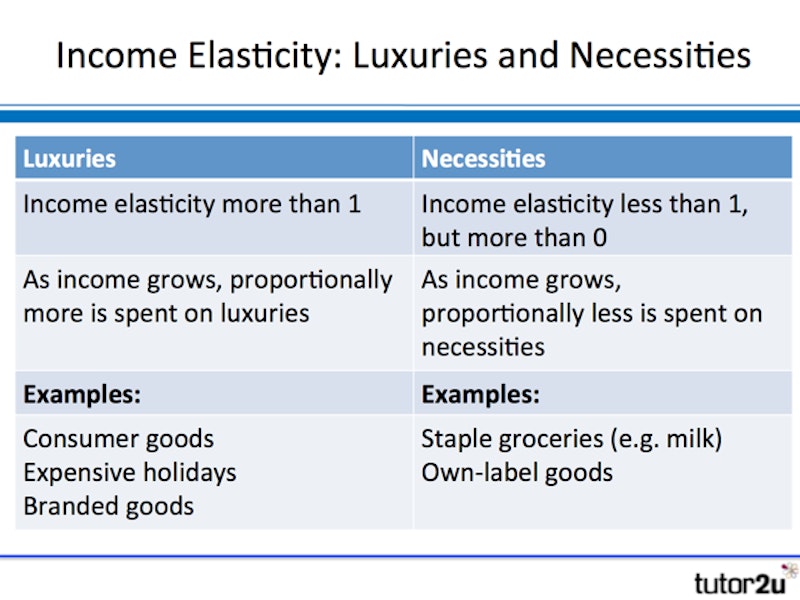Study Notes
Income Elasticity of Demand
- Level:
- AS, A-Level
- Board:
- AQA, Edexcel, OCR, IB
Last updated 22 Mar 2021
Income elasticity of demand measures the extent to which the quantity of a product demanded is affected by a change in income.
The formula for calculating IED is shown below

For most normal products
- A rise in consumer income will result in a rise in demand
- A fall in consumer income will result in a fall in demand
Extent of the change (elasticity)
- This will vary depending on the type of product (e.g. luxury v necessity)
Looking further at this distinction between luxuries and necessities:

Watch out too for inferior goods. These have an income elasticity of less than one.
For inferior goods, as income rises demand actually falls. Why does demand fall?
- Consumers switch to better alternatives
- Substitute products become affordable
You might also like
Finance: Understanding Demand (GCSE)
Study Notes
Exchange Rates
Quizzes & Activities
Free-range egg market comes to the boil
2nd December 2016
Going nuts for Nutella
26th January 2018

A Prime Example of Price Elasticity of Demand
26th July 2022

PED in Action | Inflation Hits the Humble Cheeseburger
27th July 2022
Daily Email Updates
Subscribe to our daily digest and get the day’s content delivered fresh to your inbox every morning at 7am.
Signup for emails